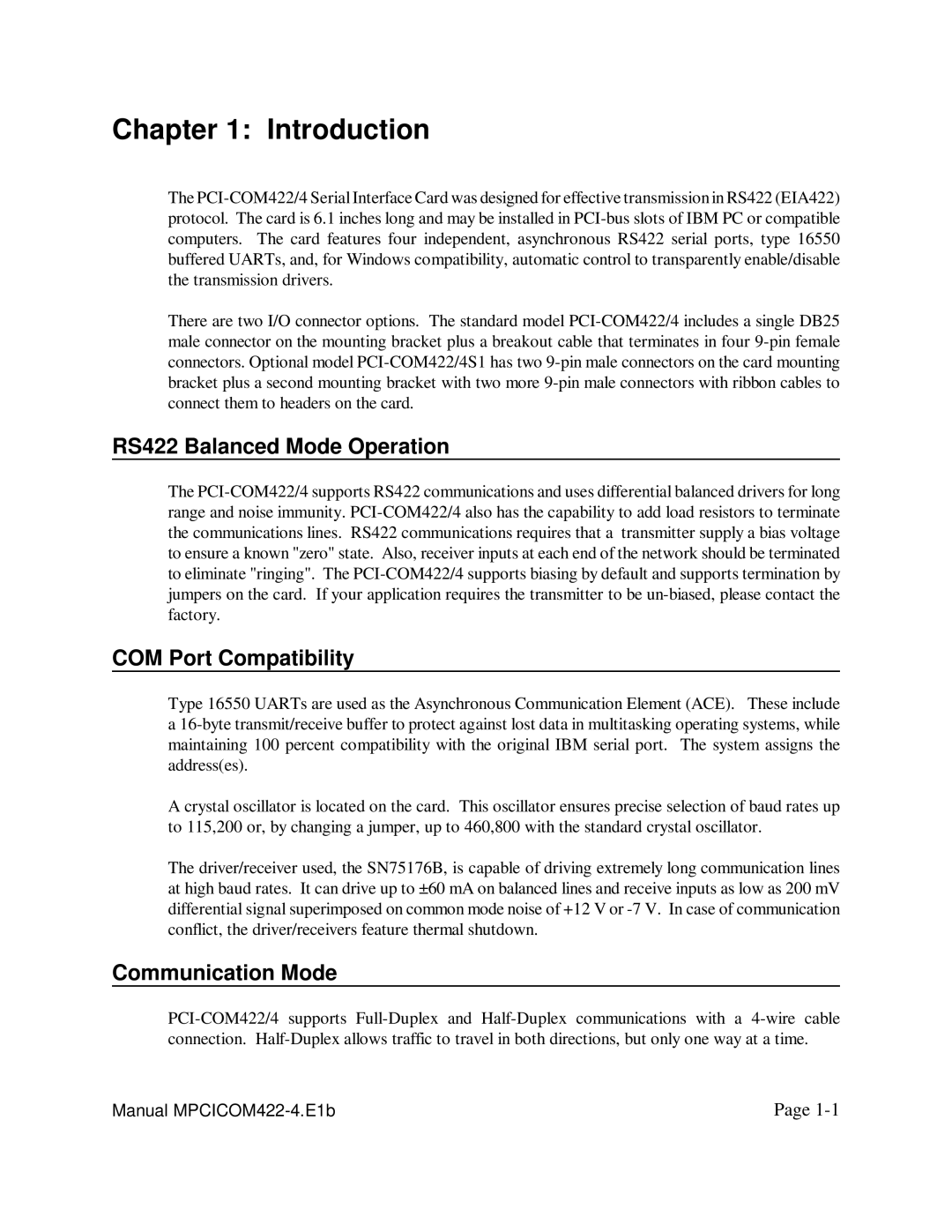Chapter 1: Introduction
The PCI-COM422/4 Serial Interface Card was designed for effective transmission in RS422 (EIA422) protocol. The card is 6.1 inches long and may be installed in PCI-bus slots of IBM PC or compatible computers. The card features four independent, asynchronous RS422 serial ports, type 16550 buffered UARTs, and, for Windows compatibility, automatic control to transparently enable/disable the transmission drivers.
There are two I/O connector options. The standard model PCI-COM422/4 includes a single DB25 male connector on the mounting bracket plus a breakout cable that terminates in four 9-pin female connectors. Optional model PCI-COM422/4S1 has two 9-pin male connectors on the card mounting bracket plus a second mounting bracket with two more 9-pin male connectors with ribbon cables to connect them to headers on the card.
RS422 Balanced Mode Operation
The PCI-COM422/4 supports RS422 communications and uses differential balanced drivers for long range and noise immunity. PCI-COM422/4 also has the capability to add load resistors to terminate the communications lines. RS422 communications requires that a transmitter supply a bias voltage to ensure a known "zero" state. Also, receiver inputs at each end of the network should be terminated to eliminate "ringing". The PCI-COM422/4 supports biasing by default and supports termination by jumpers on the card. If your application requires the transmitter to be un-biased, please contact the factory.
COM Port Compatibility
Type 16550 UARTs are used as the Asynchronous Communication Element (ACE). These include a 16-byte transmit/receive buffer to protect against lost data in multitasking operating systems, while maintaining 100 percent compatibility with the original IBM serial port. The system assigns the address(es).
A crystal oscillator is located on the card. This oscillator ensures precise selection of baud rates up to 115,200 or, by changing a jumper, up to 460,800 with the standard crystal oscillator.
The driver/receiver used, the SN75176B, is capable of driving extremely long communication lines at high baud rates. It can drive up to ±60 mA on balanced lines and receive inputs as low as 200 mV differential signal superimposed on common mode noise of +12 V or -7 V. In case of communication conflict, the driver/receivers feature thermal shutdown.
Communication Mode
PCI-COM422/4 supports Full-Duplex and Half-Duplex communications with a 4-wire cable connection. Half-Duplex allows traffic to travel in both directions, but only one way at a time.

